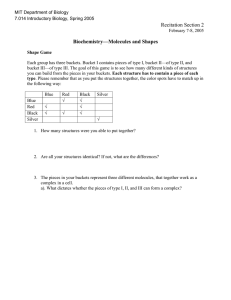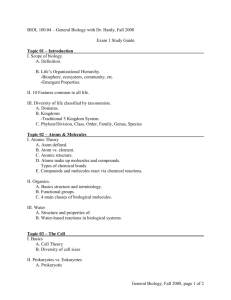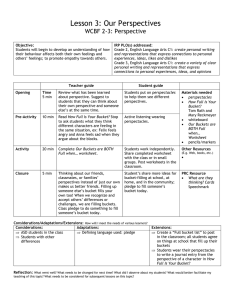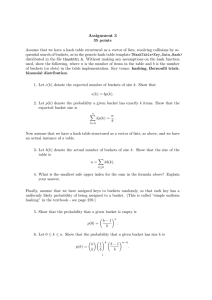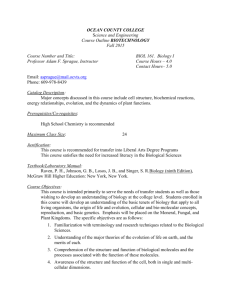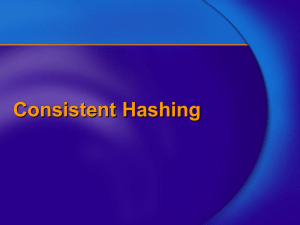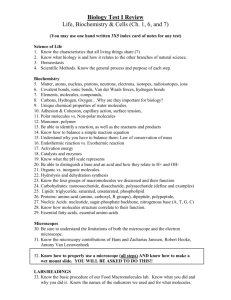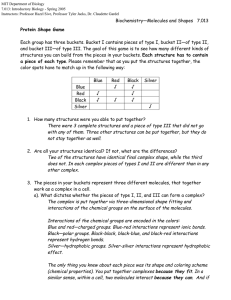MIT Department of Biology 7.013: Introductory Biology - Spring 2005
advertisement
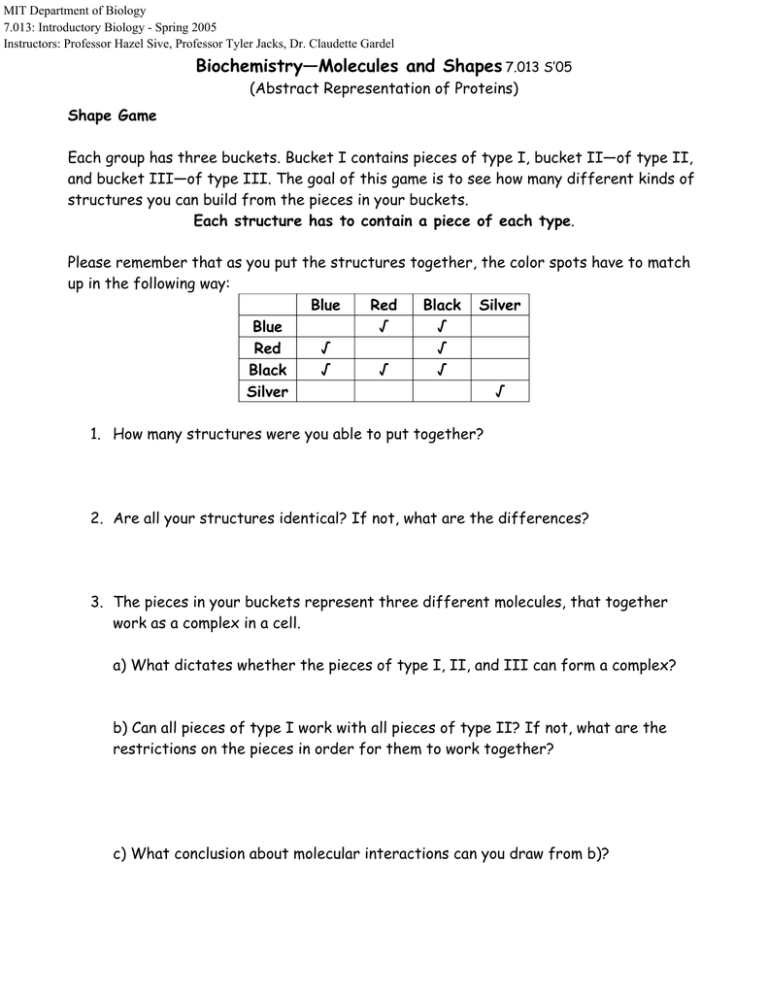
MIT Department of Biology 7.013: Introductory Biology - Spring 2005 Instructors: Professor Hazel Sive, Professor Tyler Jacks, Dr. Claudette Gardel Biochemistry—Molecules and Shapes 7.013 S’05 (Abstract Representation of Proteins) Shape Game Each group has three buckets. Bucket I contains pieces of type I, bucket II—of type II, and bucket III—of type III. The goal of this game is to see how many different kinds of structures you can build from the pieces in your buckets. Each structure has to contain a piece of each type. Please remember that as you put the structures together, the color spots have to match up in the following way: Blue Red Black Silver Blue √ √ Red √ √ Black √ √ √ Silver √ 1. How many structures were you able to put together? 2. Are all your structures identical? If not, what are the differences? 3. The pieces in your buckets represent three different molecules, that together work as a complex in a cell. a) What dictates whether the pieces of type I, II, and III can form a complex? b) Can all pieces of type I work with all pieces of type II? If not, what are the restrictions on the pieces in order for them to work together? c) What conclusion about molecular interactions can you draw from b)? 4. What is a protein? 5. What are some of the other types of biological macromolecules in a cell? 6. What is the connection between these types of molecules in the cell? 7. What are the four levels of protein structure? 8. If we consider our models to represent protein molecules, what level of protein structure do the models represent? 9. What is the first level of protein structure at which a change that led to the pieces of the same type having different shapes would have occurred? 10. What are some of the different functions of proteins and protein complexes in a cell? Each team will now get a model of the binding pocket that the protein complex interacts with. 11. Can all your protein complex models fit into the pocket? (Takes a bit of force.) 12. 7.013 contains a number of different units, most corresponding to different disciplines in biology. Do you expect that learning about the principles behind molecular interactions today will help you with the material in the other units of the course? Why or why not?
